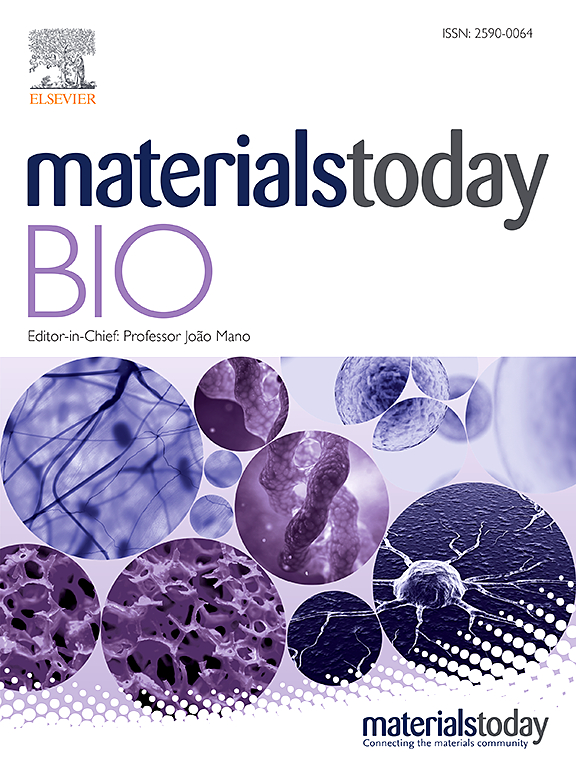Reducing the availability of endogenous copper and glucose for cascade starvation therapy and chemodynamic therapy
IF 8.7
1区 医学
Q1 ENGINEERING, BIOMEDICAL
引用次数: 0
Abstract
The rapid growth of tumors relies heavily on a continuous supply of essential nutrients, including glucose and copper. Disrupting the nutrient supply to tumors has become an increasingly focal point in tumor therapy. However, solely blocking the energy supply typically only hinders further tumor growth and may not effectively eliminate existing tumor cells. Herein, a multifunctional cascade nanoreactor (HPP/TPEN@GC) endowed with N, N, N′, N′-tetrakis(2-pyridinylmethyl)-1,2-ethanediamine (TPEN, a copper chelator) and glucose oxidase (GOx) is designed to disrupt both glycolysis and mitochondrial metabolism, which further induce cascade chemodynamic therapy (CDT). HPP/TPEN@GC can react with endogenous copper and glucose, thereby reducing their availability. The absence of copper prevents proper assembly and function of mitochondrial complex IV (CIV), hindering mitochondrial metabolism; the lack of glucose cuts off glycolysis and leads to a tumor specific starvation. Meanwhile, the reactions catalyzed by HPP/TPEN@GC contribute to the generation of Fenton-like catalysts and hydrogen peroxide (H2O2), which can further react to produce highly toxic hydroxyl radical (·OH) for CDT. Taken together, the multifunctional cascade nanoreactor reduces the availability of endogenous copper and glucose, and further takes advantage of them to generate ·OH for cascade starvation-chemodynamic therapy. Collectively, this work represents a distinctive therapeutic paradigm to harness endogenous copper and glucose, which should inspire further studies to take full advantage of endogenous nutrients to combat various diseases, including tumors.

求助全文
约1分钟内获得全文
求助全文
来源期刊

Materials Today Bio
Multiple-
CiteScore
8.30
自引率
4.90%
发文量
303
审稿时长
30 days
期刊介绍:
Materials Today Bio is a multidisciplinary journal that specializes in the intersection between biology and materials science, chemistry, physics, engineering, and medicine. It covers various aspects such as the design and assembly of new structures, their interaction with biological systems, functionalization, bioimaging, therapies, and diagnostics in healthcare. The journal aims to showcase the most significant advancements and discoveries in this field. As part of the Materials Today family, Materials Today Bio provides rigorous peer review, quick decision-making, and high visibility for authors. It is indexed in Scopus, PubMed Central, Emerging Sources, Citation Index (ESCI), and Directory of Open Access Journals (DOAJ).
 求助内容:
求助内容: 应助结果提醒方式:
应助结果提醒方式:


